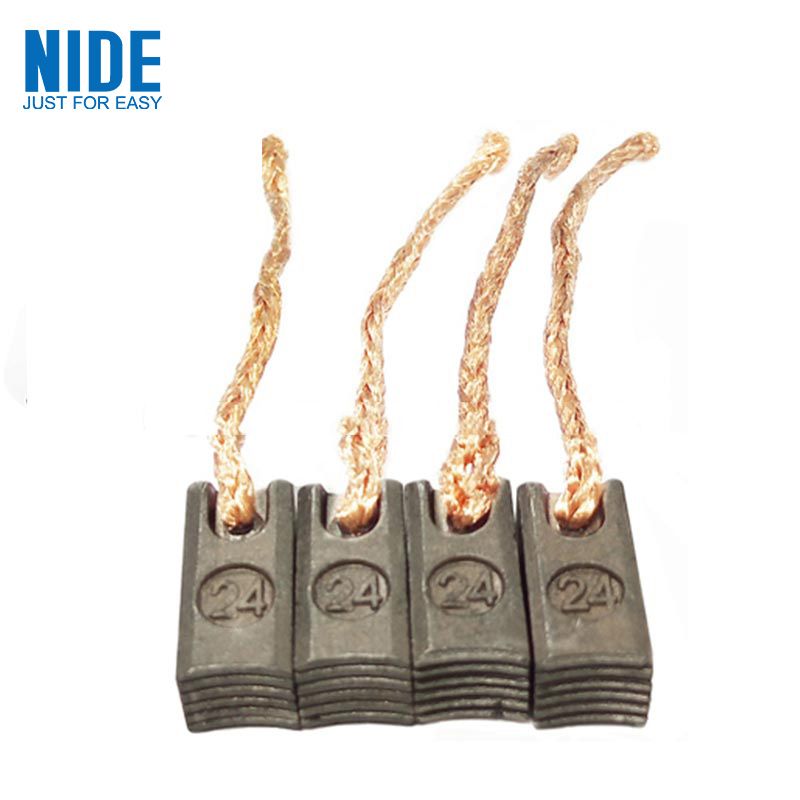What Are the Common Problems with Carbon Brushes in Toy Motors?
2024-11-14

What are the Common Problems with Carbon Brushes in Toy Motors?
1. Why do carbon brushes in toy motors wear out so quickly?
Carbon brushes need to be replaced regularly because they wear down every time the motor unit is used. When the brushes are worn out, they become brittle and prone to crumbling, which affects the motor's performance. Friction between the brushes and the commutator rubs off the brush material until the carbon brushes can no longer make contact with the commutator.
2. How do I know when to replace my carbon brushes?
Check your toy motor unit's instruction manual to determine the recommended replacement schedule for carbon brushes. You can also observe the motor's performance - if it is slow, noisy, or erratic, then it may be time to replace the brushes. You can also gently remove the brush from the motor unit and inspect it for signs of wear and tear, like crumbling or frayed contacts.
3. Can I replace my toy motor's carbon brushes myself?
Toy motors have small and delicate internal components that require special tools and expertise to work on. It is best to leave any carbon brush replacement or motor unit repair to a trained technician or experienced hobbyist. Replacing the wrong part or misaligning a component can cause permanent damage to the motor unit.
4. What are the consequences of continuing to use a toy motor with worn carbon brushes?
Worn carbon brushes can cause damage to the commutator, which is a stationary component in the motor unit that transfers electrical current from the battery to the motor coils. Damaging the commutator can render the entire motor unit unusable, which can be expensive to repair or replace. Continuing to use a toy motor with worn carbon brushes can also reduce the motor's efficiency, increase noise, and shorten the motor's lifespan.
Conclusions
Carbon brushes in toy motors are essential components that require regular maintenance and replacement to ensure proper motor function and longevity. While carbon brushes may wear out quickly, timely replacement can prevent further damage to the motor unit. Remember to read your toy motor's instruction manual and seek professional assistance if necessary.
If you need high-quality carbon brushes for toy motors or other motor components, consider Ningbo Haishu Nide International Co., Ltd., a reliable supplier with over fifteen years of experience in the industry. Visit our website, https://www.motor-component.com, to learn more about our products and services. Contact us with any inquiries at marketing4@nide-group.com.
References
1. J. Chen, Y. Liu, Y. Chen, and X. Liu. (2018). Carbon Brush Wear Condition Monitoring of AC Motor Based on the Fragility. 2018 IEEE International Conference on Electro Information Technology (EIT).
2. H. Wang, X. Su, L. Tang, Y. Zhang, and X. Chen. (2019). A Detection Method for Carbon Brush Wear of High Voltage Motor Based on Acoustic Signals. Measurement, vol. 141, pp. 1-9.
3. Y. Zhang, G. Zhao, Y. Chen, W. Wang, and C. Sun. (2019). Improved Bearing Remaining Useful Life Prediction based on Carbon Brush Wear. 2019 International Conference on Machine Learning and Cybernetics (ICMLC).
4. S. Tiwari, A. Jain, V. D. Shrivastava, A. Singh, and A. Biswas. (2016). A Case Study of Carbon Brush Failure in Industrial Electric Motors. 2016 IEEE International Conference on Power Electronics, Drives and Energy Systems (PEDES).
5. J. Kim, K. Kim, Y. Kwon, and J. Moon. (2017). Evaluation of Carbon Brush Wear and Thermal Characteristic of Electric Vehicle Generator Replacing the DC-DC Converter. 2017 IEEE Transportation Electrification Conference and Expo (ITEC).

